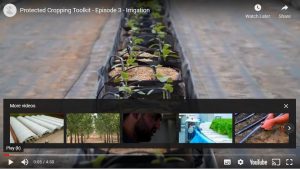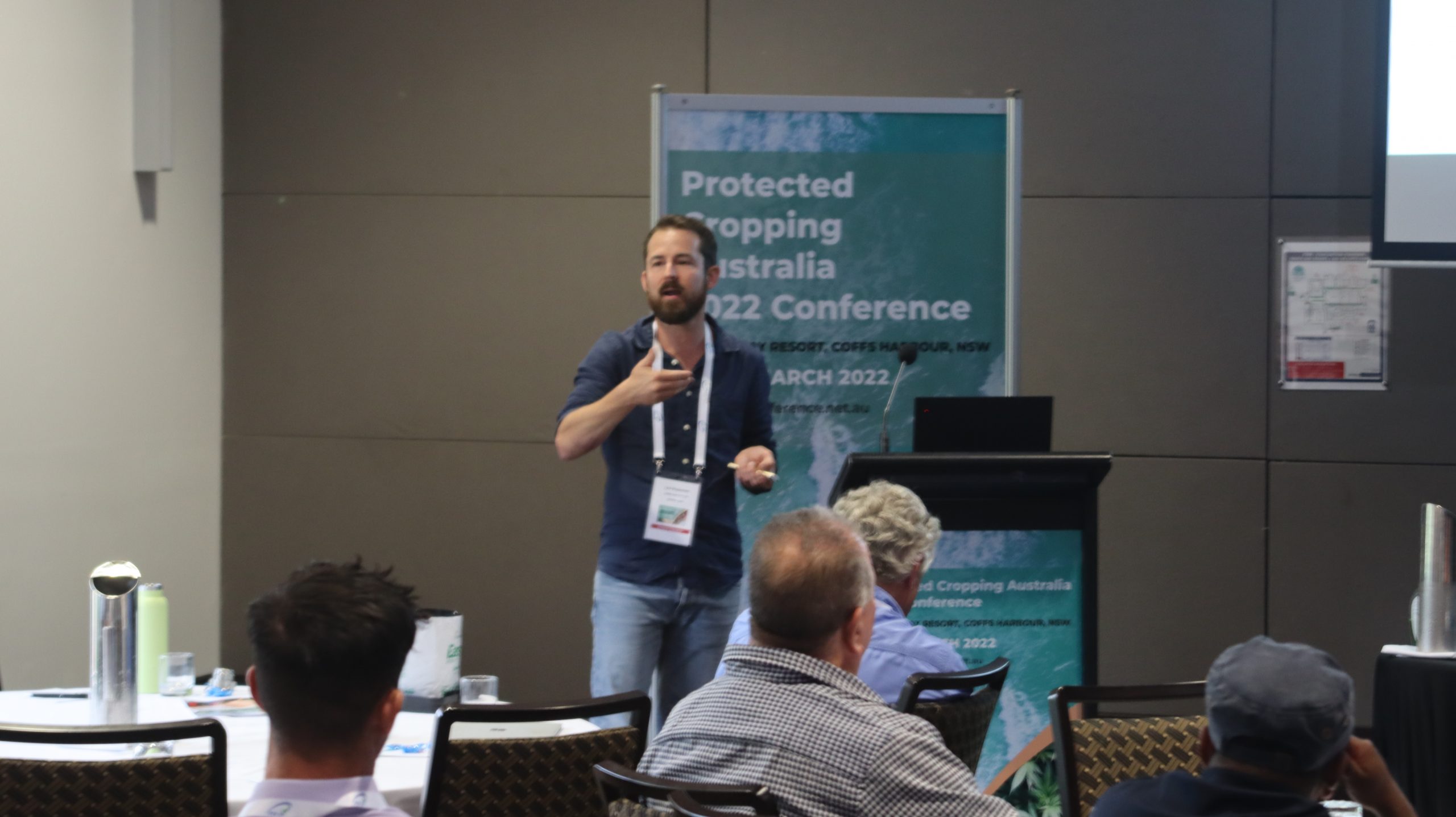Knowing and improving your irrigation: Hydroponic protected cropping essentials
The Protected Cropping Australia (PCA) Conference was held in Coffs Harbour in March. As part of the event, the VegNET – New South Wales team hosted a grower workshop on the essentials of irrigation for hydroponic protected cropping. The event attracted a diverse group of local and visiting participants, and the VegNET team secured industry specialists Tony Bundock and Levi Nupponen to present. Sylvia Jelinek reports.
Coffs Harbour has a long rich history of horticultural crops and is famous for its homegrown and harvested banana industry. In recent times, it has transformed into a large and thriving protected cropping area, growing mostly vegetables in greenhouses and berries under structures.
With the change in cropping styles, new growers and the ever-expanding industry comes more demand for training in technical skills. Many new growers are moving to the area and are keen to learn and improve their skills.
The VegNET – New South Wales grower workshop at the recent Protected Cropping Australia Conference focused on the essentials of irrigation for hydroponic protected cropping.
Agrology Managing Director Levi Nupponen presented on the practical aspects of irrigation monitoring and management: drip-irrigated hydroponics, while Genesis Horticultural Solutions Director and irrigation guru, Tony Bundock, spoke about initial system set-up for irrigation.

Information learnt and provided in this workshop proved to be especially valuable for berry growers. The principles are the same for berries and vegetable crops – and many growers have tried their hand at both as part of farm diversification.
“Effective irrigation monitoring and management is critical to the economic success of drip-irrigated substrate-based hydroponic systems, such as that used for vegetables or soft fruit,” Levi said.
“Arguably, the most critical monitoring task is that of drip and drain programs – a daily job that will help inform the grower of the effectiveness of their irrigation strategy. While this form of monitoring is a great equaliser, applicable across all levels of technology, it is often neglected by growers.”
Tony Bundock’s message during the workshop was that computerised irrigation system is the conduit between you – the grower – and your crop.
“It’s vital you monitor the crop and adjust settings accordingly to achieve optimum results. Just irrigating on time alone is like having a Ferrari that only has first gear! Using light dependent triggers allows the system to respond to changing climatic conditions,” Tony said.
“The workshop set out to present the importance of an effective monitoring program, how to establish your system (with minimal cost) and the correct procedures for monitoring and data collection. We finished up by explaining how to translate these data points to standardised values to help inform adjustments to your growth strategy.” – Levi Nupponen, Agrology
Tell, see and do
Growers learn best from a tell, see and do perspective. This event was the ‘tell’ part of the learning process with future events planned to roll out on farm demonstrations, which will be the ‘see’ and getting it ‘doing’ it for themselves on their farms.
It was a well-received event, and 35 people attended with much interest generated in further learning opportunities and support as well as hands on training.

Resources
There are some great new factsheets in development on these topics, so keep an eye out for them. Greater Sydney Local Land Services and VegNET – NSW have developed several resources as support and starting point for protected cropping. The 2019 edition of the Greenhouse Cucumber Production Manual can be downloaded from our resources page: Resources – Website – Local Land Services (nsw.gov.au).
VegNET – NSW produced a series of Greenhouse videos – Protected Cropping Toolkit. One that suits this event well is episode 3 on irrigation that can be found here.
The full series can be found here: Resources – Website – Local Land Services (nsw.gov.au).
Episode 1 – Layout and planning: youtu.be/yyK5tqZvaiw
Episode 2 – Greenhouse set-up: youtu.be/Vxr8zn359QA
Episode 3 – Irrigation: youtu.be/kwHklc0axqc
Episode 4 – Nutrient management: youtu.be/rOj2tOFXqxY
Episode 5 – Cleaning and sanitation: youtu.be/OFCZm-fpQDE
Episode 6 – Key pests and diseases: youtu.be/mwAZsyyfJT8
Hydroponic irrigation – drip irrigated substrate key messages
- Site establishment can ultimately determine the yield potential of your crop. Getting this right is essential! Key considerations include:
- Total water requirements.
- Water quality (salinity, alkalinity etc).
- System capacity (peak demand).
- Verify system capacity and uniformity through physical checks such as drip uniformity and flow variance. Carry this out after installation, maintenance and before each crop cycle.
- Fertigation units must be well designed and maintained. Regular preventive maintenance and calibration is required.
- There is no blueprint for irrigation, you must adapt the strategy to suit your crop and conditions.
- Irrigation monitoring is critical, there is no substitute for correct drip and drain data, this will ultimately guide your irrigation strategy.
Substrate use in hydroponics – basic principles and planning key messages
- There is no one substrate to rule them all! You can have success with a wide range of products; however, you may need to adapt your irrigation strategy to suit.
- Ensuring your substrate has the appropriate physical characteristics is essential for both water and air management in the rootzone.
- Matching growing containers and substrates can help get the best result out of a product, different containers may require variations in substrate.
- Understand that many measurable parameters are ‘dynamic’ and will change over time.
- Chemical properties of substrates vary, not all substrates are inert, and some interact with nutrient availability and pH buffering.
- Purchase substrate from a reputable supplier that can provide technical specifications.
- If in doubt, use this resource to carry out on farm testing to verify the quality of your substrate.
Find out more
Please contact Sylvia Jelinek on 0427 086 724 or email sylvia.jelinek@lls.nsw.gov.au.
VegNET 3.0 is a strategic levy investment under the Hort Innovation Vegetable Fund.
This project has been funded by Hort Innovation using the vegetable research and development levy and contributions from the Australian Government.
Project Number: VG21000
Cover image: Levi Nupponen pictured presenting on practical aspects of irrigation monitoring and management: drip-irrigated hydroponics.

